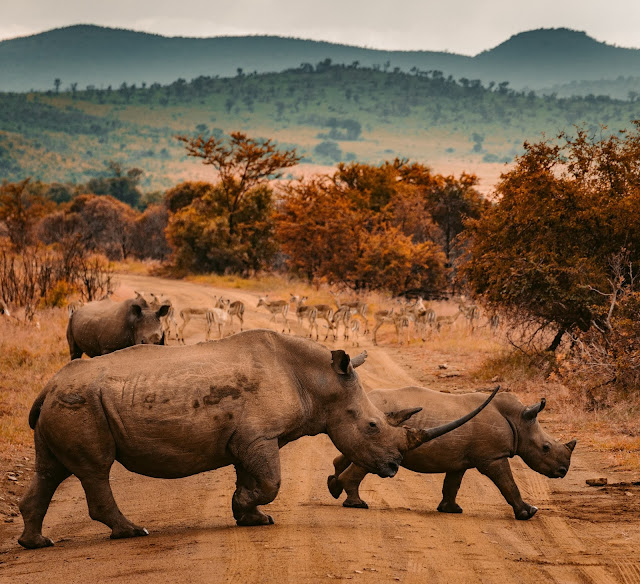Two African rhino species - the Black Rhino and the White Rhino - have both increased in numbers in recent years, particularly for successful conservation efforts in South Africa. Indeed, white rhinos have been brought back from the brink of extinction.
However, both species are again threatened by a surge in poaching to illegally meet the demand for rhino horns. The country and conservationists are stepping up their efforts but at present, a record number of rhinoceros are being killed.
Distribution:
One and a half years ago, Savannah of Africa worked with more than one million black and white rhinos. But continued hunting by European settlers saw a rapid decline in rhino numbers and distribution.
The demand for rhino horns illegally grew during the 1970s and 1980s, putting both species at risk - a prized element in traditional Asian medicine.
Due to vigorous conservation and anti-poaching efforts and an international ban on the trade of rhino horns, some African rhino populations are now stagnant or growing.
However, most of the remaining rhinos of the continent are found in only four countries - South Africa, Namibia, Zimbabwe, and Kenya. Very few African rhinoceros now survive outside protected areas and sanctuaries.
And poaching again threatens the survival of some populations.
Why rhinos matter:
Rhinos have been around for millions of years and play an important role in their ecosystem. They are important pastures, consuming large amounts of vegetation, which helps shape the African landscape. It benefits other animals and keeps a healthy balance within the ecosystem.
Locals also depend on natural resources within the rhino habitat for food, fuel, and income. As one of the 'big five' of Africa, rhinoceros is a popular destination for tourists. Ecotourism can be an important source of income for the local people.
By helping protect rhinos, we are helping people and wildlife conserve their habitat for the benefit of it, supporting local communities and ensuring natural resources for generations to come.
Poaching:
The biggest danger facing African rhinos is poaching for illegal trade in their horns, which has increased in recent years.
The number of illegally produced rhinos in South Africa alone has increased 9,000% since 2007 - from 13 to 2014 to a record 1,215.
Powdered horns have been used in traditional Asian medicine for a range of diseases - from hangovers to fever and even cancer.
But the current boom is mainly driven by demand for horns in Vietnam. Along with its use in medicine, rhino horn is purchased and eaten purely as a symbol of wealth.
Illegal poaching gangs use increasingly sophisticated methods, including helicopters and night vision equipment to track rhinos, and veterinary drugs to eliminate them.
This means that countries and conservationists need to match this level of technology to be able to deal with the problem, as well as working to reduce demand.
Thanks for reading our article:









0 Comments:
Post a Comment